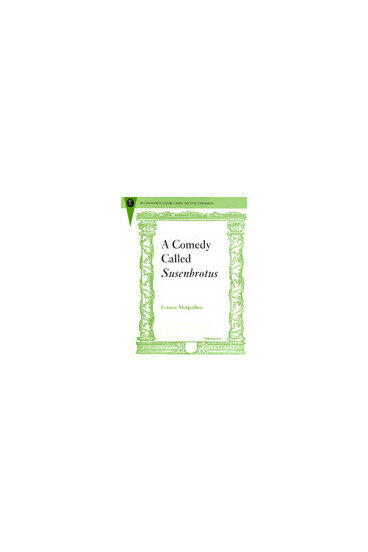A Comedy Called Susenbrotus
First translation of this bawdy farce from the Renaissance university stage
Description
The comedy Susenbrotus is a neo-Latin play, written by the students of Trinity College Cambridge and performed before King James I at Royston in March 1615/16. It has never before been edited or translated. This edition contains the Latin text (prepared from a collation of the two extant manuscript copies), an English translation with annotations to classical and contemporary allusions, and an introduction tracing the development of humanist Latin drama in the universities during the Elizabethan and Jacobean periods.
Susenbrotus is in many ways representative of later university comedy. It is a rowdy, bawdy farce with roots in the Roman comedies of Plautus and Terence. The wit and much of the humor in these plays is in the reworking of traditional themes with characters and situations adapted to contemporary types and topical satire. Almost every playwright for the professional stage (with the notable exception of Shakespeare) either wrote or acted in university plays. Moreover, they were popular forms of entertainment and were attended not only by members of the academic community but also by visiting dignitaries, courtiers, foreign ambassadors, and on occasion, the English monarchs.
Susenbrotus is special among later university plays because it was specifically written for King James I. It was meant to flatter the king, who prided himself on his humanist education, with a display of wit and erudition. It was also meant to entertain: the play itself is quite funny. It involves the antics of several contemporary types (the pedant, a poet, a Spanish dandy, and a braggart soldier) vying for the affection of a cross-dressed boy. Much of the wit in Susenbrotus is verbal: scholarly puns, sexual metaphors, classical allusions, and quotations that are explained in annotations. The sustained transvestitism of the character Fortunia distinguishes it from its classical sources as well as from other plays of its type. Unlike Latin texts that were submitted to publishing houses and therefore corrected or stylized by printers, Susenbrotus is an example of Latin as it was written in the seventeenth century.
Connie McQuillen is Associate Professor of Humanities, Southwest State University, Minnesota.
Connie McQuillen is Associate Professor of Humanities, Southwest State University, Minnesota.

